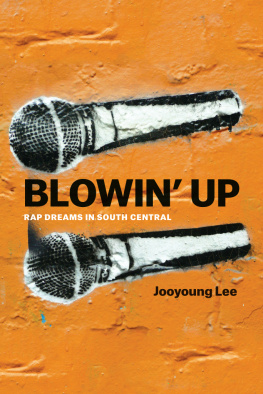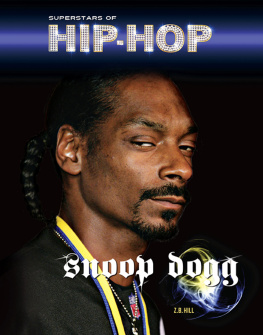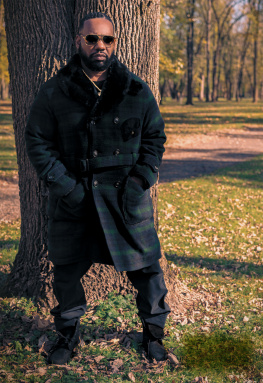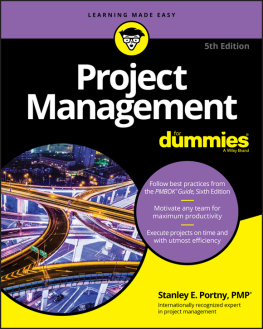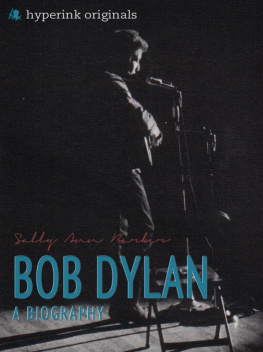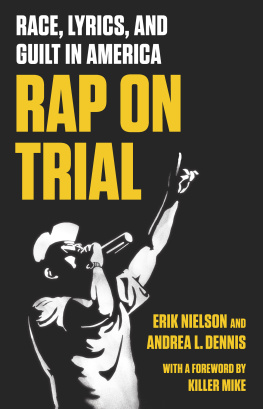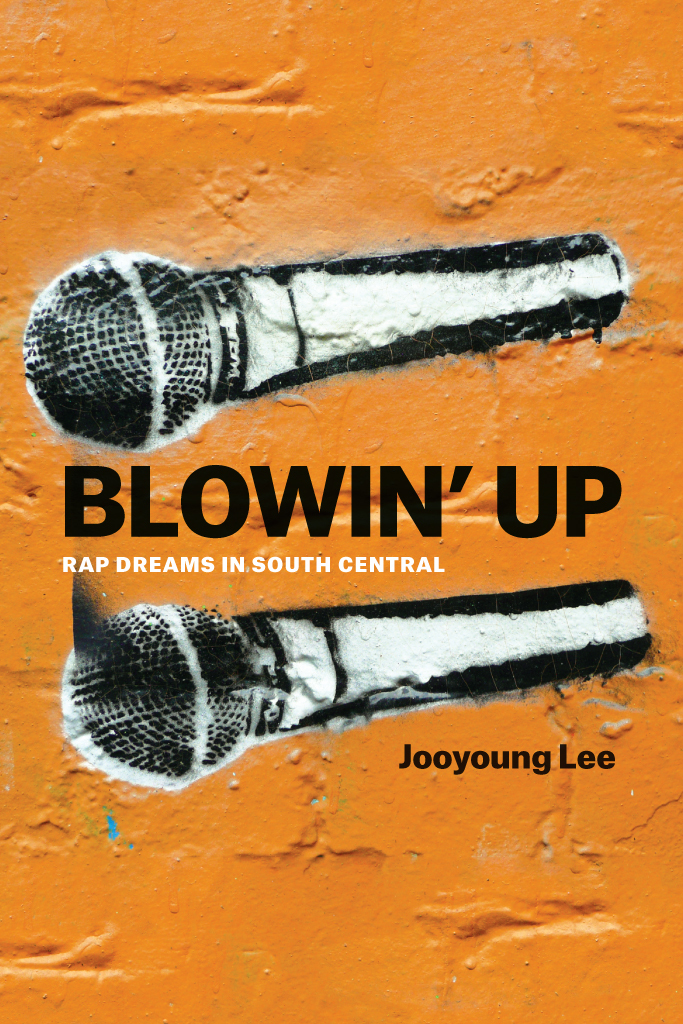Jooyoung Lee is assistant professor in the Department of Sociology at the University of Toronto.
All rights reserved. Published 2016.
Names: Lee, Jooyoung, 1980 author.
Title: Blowin up : rap dreams in South Central / Jooyoung Lee.
Description: Chicago ; London : The University of Chicago Press, 2016. | Includes bibliographical references and index.
Identifiers: LCCN 2015029527 | ISBN 9780226348759 (cloth : alk. paper) | ISBN 9780226348896 (pbk. : alk. paper) | ISBN 9780226348926 (e-book)
Subjects: LCSH : Rap musiciansCaliforniaLos Angeles. | Rap (Music)History and criticism. | African American teenage boysCaliforniaLos Angeles. | Music tradeCaliforniaLos Angeles.
Classification: LCC ML3531 .L44 2016 | DDC 782.42164909794/94dc23 LC record available at http://lccn.loc.gov
This paper meets the requirements of ANSI / NISO Z39.48-1992 (Permanence of Paper).
Down Crenshaw Boulevard
It was nighttime and I was cruising eastbound on the 10. There were a few cars here and there, but no clogged lanesjust smooth, open road. My mind roamed as I zipped to the Crenshaw exit. It only took twenty minutes, which wasnt bad from the Westside of LA.
At Crenshaw, I exited and continued southbound, driving past beige-colored apartments, minimalls, gas stations, Yum Yum Donuts, and the Liquor Bank. As I got closer to Leimert Park Village, I passed the Magic Johnson Theatre, a three-story Walmart, and the West Angeles Church, which looked like a flying saucer.
At a red light, a silver Mustang pulled up alongside me. The driver was leaning back, with one hand resting on the wheel. He bobbed his head. Our car windows were open, so I turned down the volume on my music and listened. He was bumping How We Do by the Game, a Compton rapper. I bobbed my head a little, and the passenger seemed to smileor was it smirk? Who was I kidding? The light turned green, and we drove off.
Minutes later, I approached Forty-Third Place, home of Leimert Park Village. The storefronts here were colorful. There were jazz cafs, barbershops, soul-food restaurants, African jewelry and art stores, and a bunch of other places celebrating Black art and culture. Id never seenmuch less heard aboutthis side of South Central. It was very different from its depiction in gangsta rap and movies like Boyz n the Hood.
Over the next five years, I would spend most of my Thursday nights and early Friday mornings at Project Blowed, a weekly hip hop open It continues to be an important community space for the arts in South Central.
For the first couple of years, I thought my project would focus exclusively on Project Blowed. It was an important scene for rappers, who came back every Thursday night to freestyle, battle, and workshop new songs with one another. It was where they learned how to rhyme and where they created friendships with other rappers. For many, it was a creative sanctuary away from gangs, a neutral zone where youth from different neighborhoods could get together around their shared love of hip hop. This was no small feat in South Central. In many neighborhoods across the city, young people are asked by gang members and police alike whether they are gang affiliated. Who you claim? Where you from? and What hood you bang? are common questions that young people face when navigating the streets. But things were different at Project Blowed. People were not interested in where you were from. They wanted to know if you could rhymeif you had bars.
As time went on, I realized my project was moving outside Project Blowed. As some rappers got older and more experienced, they became interested in blowin up, or becoming successful recording artists. I began to see what sociologists call a career, or a moving perspective on peoples lives. At first, Project Blowed nurtured the creative lives of young men who wanted to become rappers. Later, rap would become an aspiration, a career path, a way up in the world.
While they spent their time at Project Blowed learning how to rhyme and trying to impress their peers, many of these men would shift their energies toward getting discovered. They wanted to get signed, and they hoped to record albums, tour, and make a living from their music. Some also wanted to become famousor at least well known and respected in the music industry. This took me into late-night recording sessions, performances at new venues, and the networking and hustle involved in trying to blow up. It also changed the course of this book.
I came to see the importance of following the same people over time. If Id kept my eyes on my original interestscommunity life at Project BlowedI would have missed out on the unexpected twists and turns that eventually shaped this book. In academia, there is a lot of pressure to publish or perish, not unlike the hurry for rappers to blow up. But our rush to gather data and publish quickly can blind us to the unexpected ways people change over time. Spending extended time with the same people enriches our thinking and our writing.
The book you are now reading is the result of nearly five years of uninterrupted fieldwork. I started this research in January 2005 and concluded regular data collection in the fall of 2009. During this time, I collected thousands of pages of fieldnotes, most of which I wrote in the early morning hours, after returning from Project Blowed, concerts, or late-night recording sessions. I also interviewed thirty of the rappers I met in this scene, most multiple times. Interviews allowed me to compare my observations with how rappers described their own lives and experiences. They also helped me understand peoples pasts and how that past shaped their pursuits.
I also used videos. After a few months in the scene, I started bringing a small, handheld video camera to Project Blowed. Some rappers were recording themselves to promote their music on YouTube. Others wanted to get in on that action but didnt have a camera or someone willing to record them. I was happy to help. If anything, recording gave me a way to just be around. But what started as a small way to give back became something much bigger. I would eventually collect ninety hours of videotapes, many of which have enriched my analysis. This process helped me see the value of using videos in ethnographic fieldwork (more on this in the methodological appendix).
I continued occasional data collection until spring 2015, when I was putting the final touches on this book. I mostly connected with people whenever Id visit Los Angeles during holidays and breaks from teaching. These visits were brief but they gave me a chance to check in with people. I also kept in touch with people through social media: Facebook, Twitter, SoundCloud, and Instagram. In some cases, I used Facebook chat to reinterview people whose stories are featured here.
While finishing this book, I also reconnected with people and asked if they still wished to be in the book. I did this because consent should be an evolving process. Peoples lives change over time. They should have the option to consent or withdraw their participation throughout the life of a project. Some people asked to read the book first. For personal reasons, one person asked to be taken out of the book. But everyone else said that they still wished for their stories to be here.

